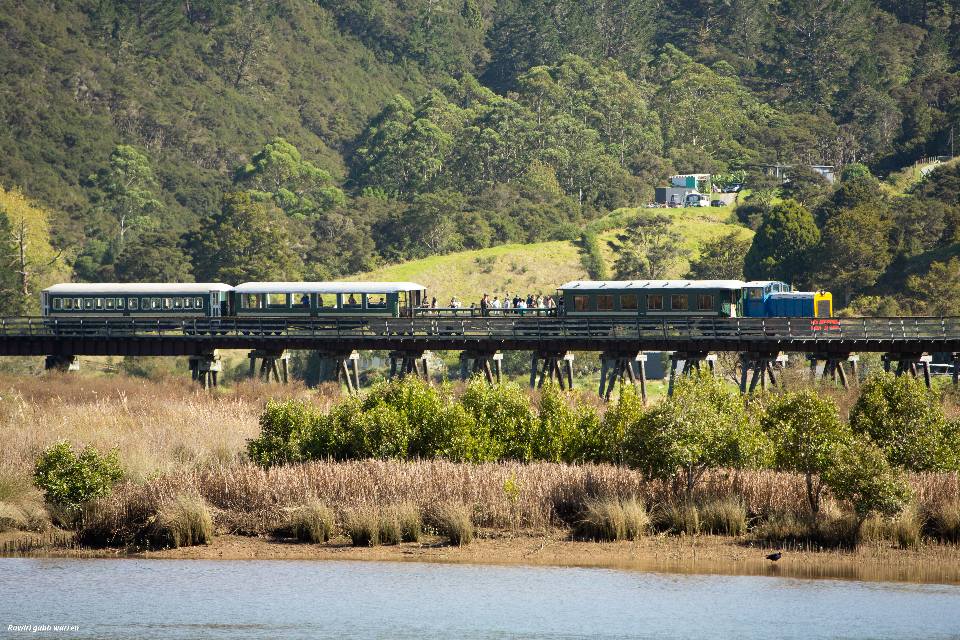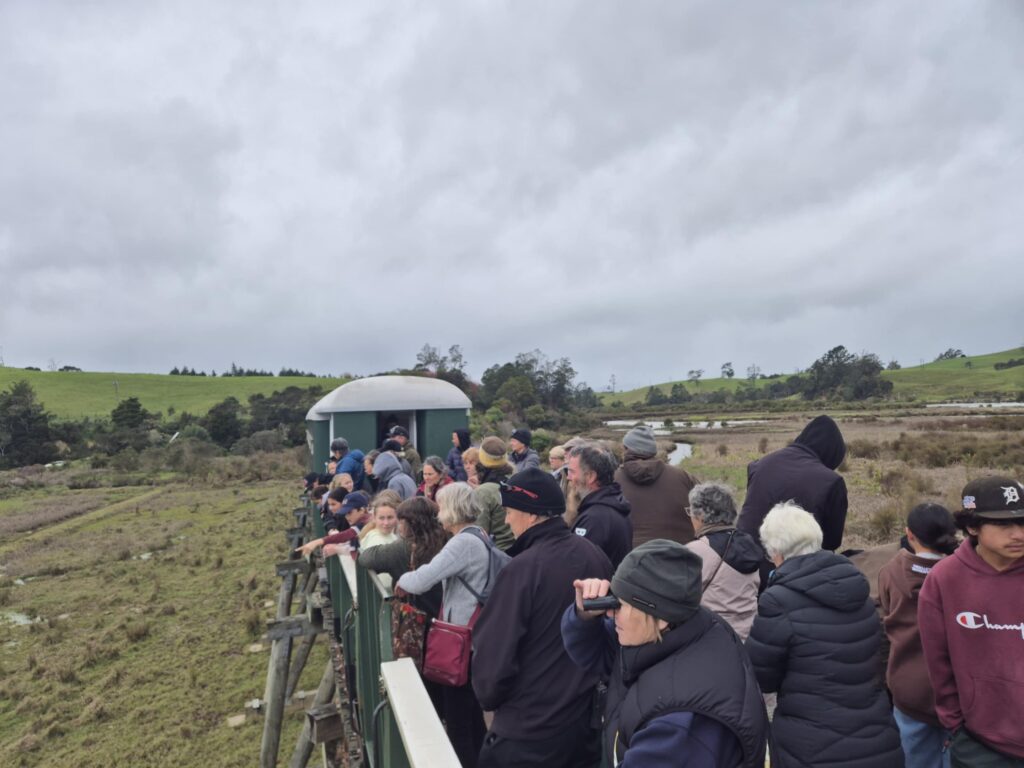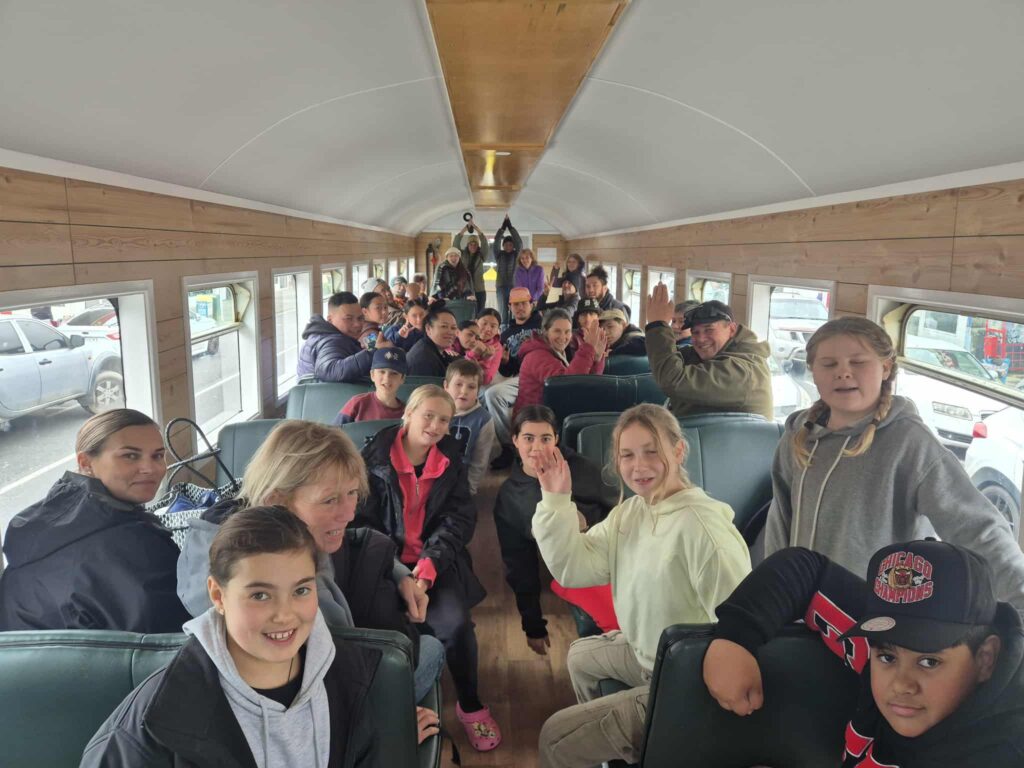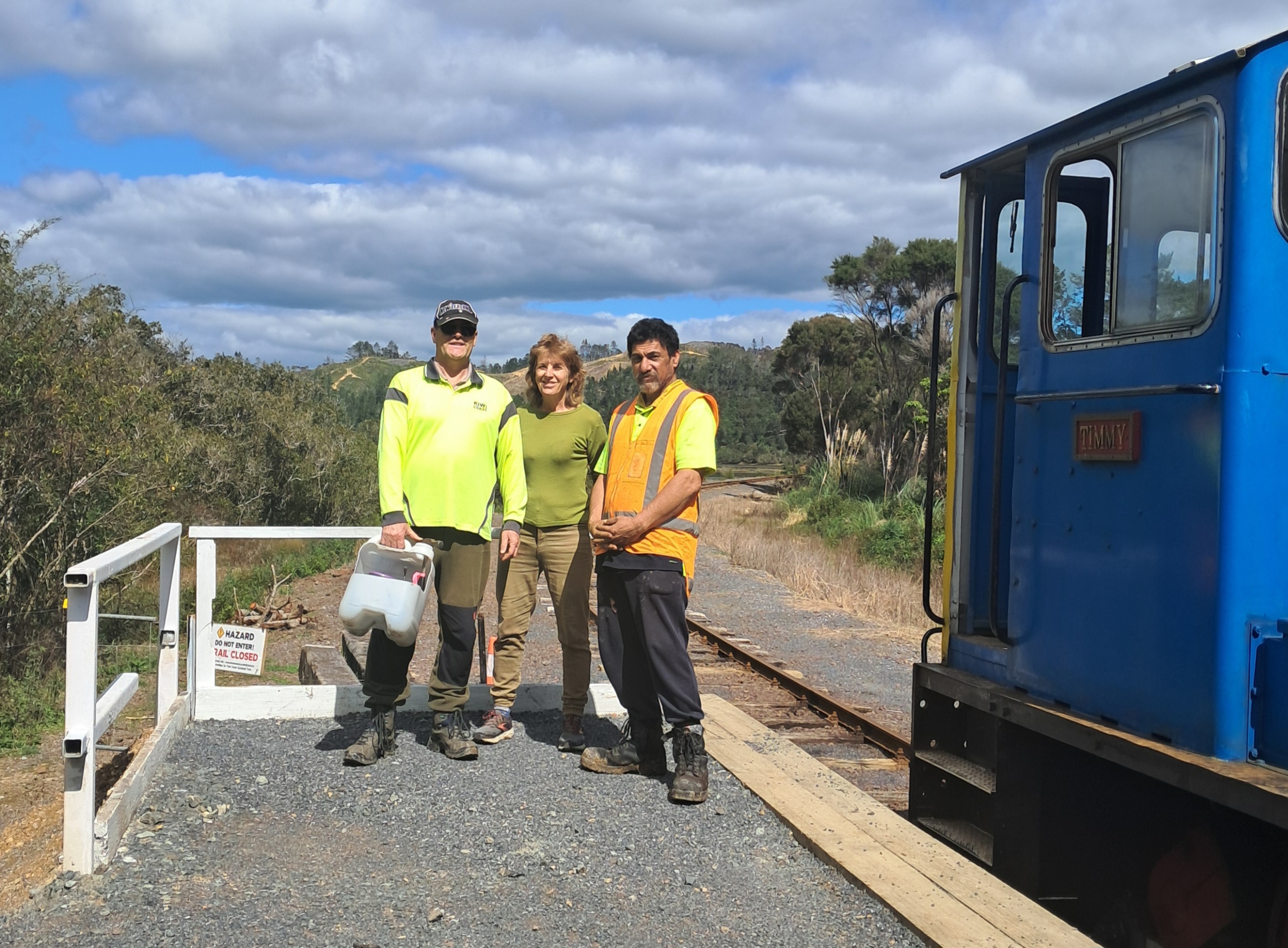Andy from Kiwi Coast, Cynthia from Bay Bush Action and Gerratt from the Keteriki Rail Track crew. Photo: Keteriki Ltd.
New traps have been installed along the original Opua Branch line, New Zealand’s most northern historical railway, in a partnership between Bay Bush Action, Kiwi Coast and Keteriki Ltd, who operate the Bay of Islands Vintage Railway.
The 14 km rail corridor between Kawakawa and Opua has undergone extensive upgrades in recent years. The trail leaves Kawakawa, winding through farmland in Taumārere, crossing the Kawakawa River at Taumārere, and entering a patchwork of salt marsh, raupō swamps, coastal wetlands and remnant forest until the trail arrives in Opua.
This heritage rail corridor (the oldest in the North Island, circa 1880-84), operated by local charity Keteriki Ltd (Bay of Islands Vintage Railway) also forms part of the Te Pou Herenga cycleway and includes habitat for many threatened and endangered birds such as the bittern/matuku hūrepo of which only around 950 are left in New Zealand. The swamp marshes are home to spotless crake and fernbirds, while the exposed mudflats attract spoonbills and herons..
But it’s not just the train and cyclists who use the rail corridor — pests also use the trail to move through the landscape and access vulnerable wetland habitats, threatening the native species that live there.
In 2020 Bay Bush Action and Kiwi Coast provided support to set up a trapline along the 14km corridor. Traps were provided through the Northland Regional Council’s ‘Mid North High Value Area’ project which supports community-led pest control efforts across the Mid North. Community volunteers from Opua and Kawakawa have been checking the traps monthly. With the recent upgrades to the railway line, the Keteriki – Vintage Railway team now check the traps as part of their regular operations.
“Keteriki Ltd-Bay of Islands Vintage Rail are thrilled to be working with Bay Bush volunteers and Kiwi Coast,” says General Manager Laurell Douglas. “We love sharing the unique cultural, heritage, ecological features of the corridor, wetland and riverscape with our visitors. Long Bridge, at Taumārere, is the longest curved wooden rail bridge in the southern hemisphere and from the trains outside viewing deck you can feel immersed in the magic of another time. Working together with local community groups, hapū, farmers and schools on the corridor to enhance the biodiversity and protect endangered birds and river systems is important to all of us and we are thankful for the opportunity to have so many passionate volunteers on board with our ‘biodiversity corridor’ vision and kaupapa.”
Last year volunteers removed 19 stoats and 2 weasels from the corridor. The recent addition of the possum traps has helped fill gaps in the trap network, with stoat and possum traps now being found along the entirety of the trail. With the recent extra traps, more pests will be removed over the coming months.
The Keteriki – Vintage Railway team also recently hosted a bittern workshop with Wendy Ambury from the Love Bittern Trust. The workshop brought together farmers, schools, whānau, hapū, and community groups – along with Keteriki track and operational kaitiaki –to learn more about the endangered matuku-hūrepo (Australasian bittern). Critically endangered, Bittern can be viewed from the train at Long Bridge, Taumarere. Keteriki – Vintage Railway hosted the group on the train to share ideas and opportunities to protect and enhance the wetland habitat.




Photos from the Love Bittern workshop that was hosted on the train in August with local community groups, schools, hapū, and Bay Bush volunteers. Photos: Keteriki Ltd.
With the dedication of local trappers, Bay Bush Action, the Keteriki – Vintage Railway team, NRC and Kiwi Coast support, these wetlands can continue to be a refuge for birds for future generations.



